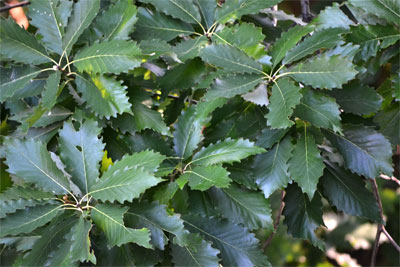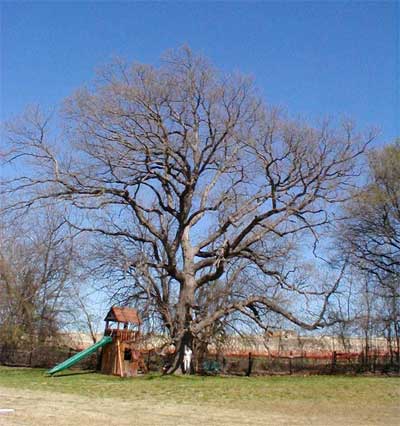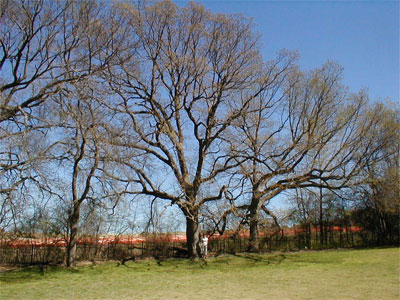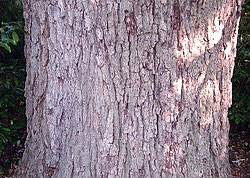Texas Tree Tips

Chinquapin oaks with optimal growing conditions have large glossy-green leaves. (Photo by Bill Seaman)
Tree Species Profiles — Top Rated Shade Trees
Chinquapin Oak, Quercus muehlenbergii
A true Texas native, the chinquapin oak is a worthy addition to consider for any property or landscape. It is an excellent tree that can live to well over 100 years.
Sometimes spelled “chinkapin,” this oak is not a rare tree. Nevertheless, it is not particularly common in rural or urban areas. Nature plants it in the deep soils along creek and riverbeds from Central Texas eastward. The species is available in most nurseries, yet this canopy tree is currently underutilized.
In speaking with green-industry professionals over the years, I’ve heard many describe chinquapin oaks as slow-growing trees. Some other resources list it as a moderate or even a fast grower. I would attribute these differences in growth rates to variable soil types, as well as cultural conditions unique to each site. While chinquapin oaks prefer the deeper, better-drained soils near creeks and streams, they readily adapt to many soil types. On rocky or shallow soils, they may be slower growing — but so is every other plant nearby! With the right soil and conditions, they can grow at a moderate-to-fast rate when they are young. Like most trees, the growth rate will slow as they age. I find the Internet references that classify chinquapin oak as a fast-growing tree to be overly optimistic.

Chinquapin oaks typically have strong branching habits and a rounded crown. Photos by Steve Houser.
Some resources note the height as up to 50 feet tall and others up to 70 feet. As with growth rate, tough soil or site conditions may limit the height of the species. One of the larger chinquapins listed on the DFW Regional Champion tree list is 88 feet tall with a crown spread of 72 feet and a trunk diameter of 40 inches. Arborists in the eastern parts of the United States report heights of over 100 feet.

Important attributes include the facts that chinquapins have very few pest or disease problems and they are resistant to the dreaded “fungus among us” — Oak Wilt (Ceratocystis fagacearum). Drought tolerance can vary according to the soil type and site conditions, but generally, the tree can be considered moderately tolerant.

Chinquapin oak bark is tan to grey and offers an interesting texture in a landscape. Photo courtesy of Texas Tree Trails.
Chinquapin oaks typically have a single, straight trunk with a rounded crown. The bark is light tan to grey with long narrow ridges. The wood is dense, hard, and durable — an admirable trait for tree climbers who must put a rope around a limb strong enough to support their weight as they work through a tree. In oaks we trust … it`s those wascally willows that can ruin your day.
The chinquapin oak is a deciduous tree (loses its foliage in the winter) with leaves that are dark-green and shiny on the topside and pale grey-green on the underside. The leaves are often called “course” and “saw-toothed” due to their size and serrated edges, which offer a different texture of foliage to any landscape. The foliage varies in size. It is similar to that of the true chinquapin of the eastern states, Castanea pumila, as well as two chestnuts, Castenea dentata and Castenea mollissima. Fall color is often noted as red to bronze, but it can also be yellow in some years.
The acorns are dark brown or black, and they are a favorite of turkeys, quail, deer, raccoons, bears, and hogs. American Indians also used them as a vital food source.
Chinquapin oak is a great tree with many attributes that are worthy of your consideration.
About the author: Steve Houser is a Dallas native with more than 30 years of experience as a consulting arborist and tree climber. He is the president of Arborilogical Services Inc., “The Experts Your Trees Deserve.” www.arborilogical.com.

